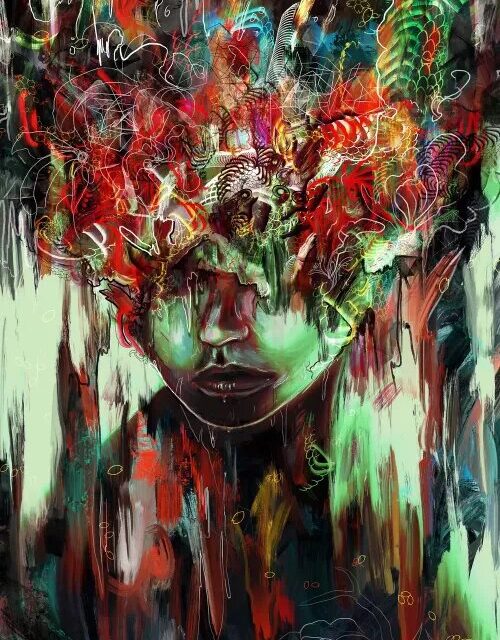A Quick Guide
This article goes deep into the dark recesses of the chaotic mind, explaining how it works and what kinds of dynamics are at play. To figure out what the chaotic mind is and what it entails, as well as the creative potential that lies within it, we are going on an exploration to understand this complex mental landscape. In addition, useful tips and techniques are offered for those who want to tap into the innate inventiveness and originality that frequently result from a seemingly chaotic mental process.
Introduction: The Intriguing World of the Chaotic Mind
The mind is a fascinating and complex thing that often goes against what we think we know. There is a subgroup of people who, because of their innate propensity towards chaos, have a cognitive landscape that is not easily arranged within its complex network of ideas, feelings, and visuals. This disordered mind, while sometimes misunderstood and stigmatized, possesses a unique capacity for creativity and innovation that many people are unaware of. Hence, to fully understand the complexity of human thought and to use it for personal and professional growth, it is essential to know how this cognitive process works.
Defining the Chaotic Mind
The best way to describe a chaotic mind is as a way of thinking in which thoughts don’t follow normal rules of order and organization. People with chaotic minds often have a stream of disorganized awareness because their thoughts, feelings, and stimuli constantly bombard them. This can also show up as an inability to stay focused, attention shifting a lot, and a desire to solve problems in unusual ways. This might seem hard to control, but the chaotic mind has a special ability for thinking in different ways and making connections that don’t make sense. This can lead to new ideas and creativity in many areas.
The Psychological Perspective
Psychologists have found links between having a chaotic mind and traits like thinking in different ways, being open to new experiences, and being very sensitive to stimuli. Furthermore, researchers have found that people with chaotic cognitive patterns often have an amazing ability to come up with new ideas and answers that go beyond the usual limits of thought. This special way of thinking makes people more likely to come up with creative solutions to problems that can change many areas of life, such as business, science, and the arts.
Harnessing the Power of Chaos
The disorganized mind can be very creative, but it can also be challenging to deal with. A lot of new information and ideas can make you feel overwhelmed and cluttered, which can make it hard to make decisions and get things done. Mindfulness practices, structured planning, and cognitive-behavioral techniques are some of the ways that people can turn their chaotic energy into something beneficial. These techniques help people use their brain complexity to get the best results.
How to Encourage Creativity and New Ideas
Developing a mentality that recognizes and values the wide range of thought processes is a necessary step toward accepting the chaotic nature of the mind. Setting up a space that encourages open conversation, creative thinking outside the box, and working together on ideas can help bring out the creativity that’s already there in the chaos. Encouraging multidisciplinary strategies and developing a spirit of experimentation can uncover unique solutions and pave the road for ground-breaking improvements in a variety of sectors.
Practical Strategies for Harnessing Chaotic Creativity
Mindfulness Techniques
By incorporating mindfulness techniques like meditation and deep breathing, people can become more self-aware and develop mental clarity, which will help them better control the chaos in their brains.
Structured Creativity Sessions
Holding creative classes and structured brainstorming sessions can help you organize the many thoughts and ideas that come up in the mind of an individual, creating an atmosphere where people can work together to come up with new ideas.
Adaptive Planning and Organisation
Using flexible planning methods and organization tools that are designed to work with the constantly changing ways of thinking of a chaotic mind can help you better handle your time and decide which tasks are most important, which can lead to more productivity and reaching your goals.
Cognitive Flexibility Training
By putting people with chaotic minds through puzzle-solving and lateral thinking exercises, cognitive flexibility training can improve their cognitive flexibility and help them become more adept at making adaptive decisions and solving problems quickly.
Key Takeaway
People often think of the mind as a turbulent ocean of thoughts and ideas, but it holds a treasure trove of untapped potential and limitless imagination. People can go beyond the limits of conventional thinking and make way for radical innovation and personal growth by understanding the subtleties of this complex cognitive landscape and putting in place customized plans for tapping into its creative energy. Accepting the chaos inside is not only a way to learn more about yourself but also a way to open up the mind’s endless potential.



 Healing Your Inner Child: A Short Guide
Healing Your Inner Child: A Short Guide  What You Need to Know About Trauma & its effects
What You Need to Know About Trauma & its effects  Dealing with a Narcissistic Parent: Strategies and Support
Dealing with a Narcissistic Parent: Strategies and Support  Understanding the MBTI Personality Types
Understanding the MBTI Personality Types  Understanding the Big Five Personality Traits
Understanding the Big Five Personality Traits  Body Image: what it entails and how it affects you
Body Image: what it entails and how it affects you